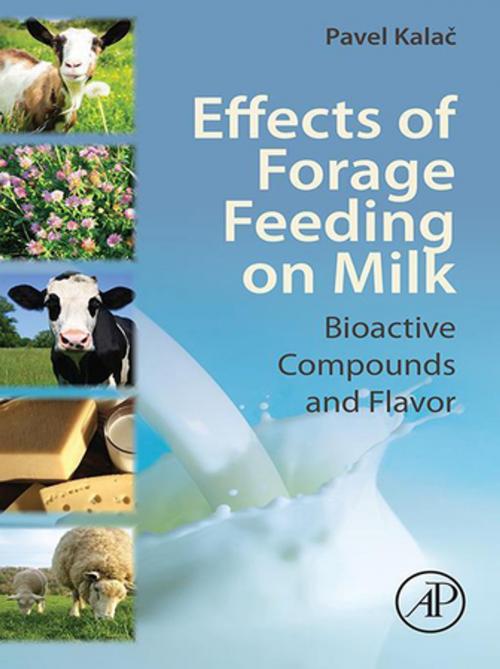Effects of Forage Feeding on Milk
Biaoctive Compounds and Flavor
Nonfiction, Science & Nature, Technology, Food Industry & Science| Author: | Pavel Kalac | ISBN: | 9780128118634 |
| Publisher: | Elsevier Science | Publication: | July 5, 2017 |
| Imprint: | Academic Press | Language: | English |
| Author: | Pavel Kalac |
| ISBN: | 9780128118634 |
| Publisher: | Elsevier Science |
| Publication: | July 5, 2017 |
| Imprint: | Academic Press |
| Language: | English |
Effects of Forage Feeding on Milk: Bioactive Compounds and Flavor collates the research related to biologically active compounds associated with chain fresh/preserved temperate forages, the dairy animal, and cow´s, goat´s, and ewe´s milk and milk products.
Comprised of six chapters, this book begins by presenting a brief overview of components of the chain – the forage, the milking animal, and milk. The book then addresses desirable and detrimental compounds by providing an expansive description of each compound’s chemical nature, methods of analytical determination, biological properties and effects on humans, factors affecting level in forage, effects of ensiling and haymaking, processes within the animal, content in milk and milk products, and health evaluation. The book also outlines volatiles affecting the flavor of milk and milk products, and includes a conclusion and numerous relevant references for further reading.
- Summarizes the research related to biologically active compounds associated with milk and milk products
- Presents an overview of chain forage related to milking animal milk
- Explores desirable and detrimental compounds
- Outlines volatiles affecting the flavor of milk and milk products
- Includes relevant references for further reading
Effects of Forage Feeding on Milk: Bioactive Compounds and Flavor collates the research related to biologically active compounds associated with chain fresh/preserved temperate forages, the dairy animal, and cow´s, goat´s, and ewe´s milk and milk products.
Comprised of six chapters, this book begins by presenting a brief overview of components of the chain – the forage, the milking animal, and milk. The book then addresses desirable and detrimental compounds by providing an expansive description of each compound’s chemical nature, methods of analytical determination, biological properties and effects on humans, factors affecting level in forage, effects of ensiling and haymaking, processes within the animal, content in milk and milk products, and health evaluation. The book also outlines volatiles affecting the flavor of milk and milk products, and includes a conclusion and numerous relevant references for further reading.
- Summarizes the research related to biologically active compounds associated with milk and milk products
- Presents an overview of chain forage related to milking animal milk
- Explores desirable and detrimental compounds
- Outlines volatiles affecting the flavor of milk and milk products
- Includes relevant references for further reading















